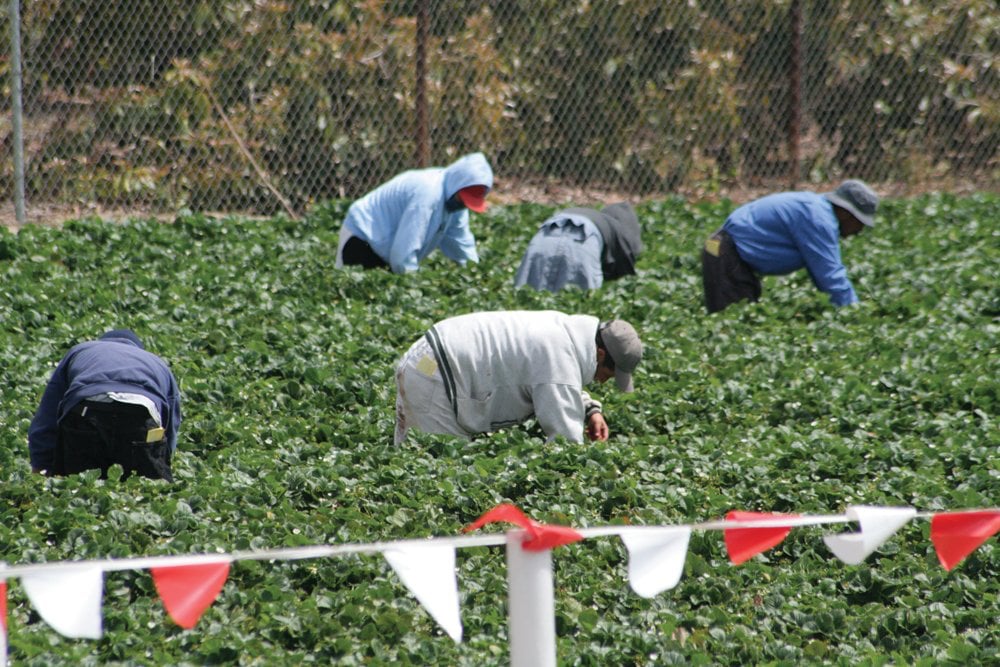Migrant worker supports to receive $1.5 million in cost-share funding

A joint investment of $1.5 million is being made by the federal and provincial governments into programs designed to attract and retain international agri-food workers in Ontario communities.
Read Also


Agriculture missing from Canada trade picture
Agriculture is missing in action when “Team Canada” trade missions come up; that’s a big problem given the market access threats farmers currently face in the U.S.
In a release, the governments said the funding will support initiatives that create a more welcoming environment for foreign workers., including providing stronger supports such as translation services, expanding or introducing transportation services, and supporting cultural and recreational activities.
The overarching intention is to improve access to community services and promote independence for foreign agriculture workers, whose contribute to an industry worth tens of billions in annual revenue for the province. Ontario’s southwestern region has been particularly targeted for the investment, given the area’s significant greenhouse and horticultural sector and its reliance on international workers.
Anthony Leardi, MPP for Essex, and Rob Flack, Ontario’s minister of agriculture, joined representatives of the South Essex Community Council, Ontario Greenhouse Vegetable Growers, and others in supporting the investment at an event in Kingsville Sept. 27.
Flack drew attention to the outsized economic impact of Ontario’s agri-food sector.
“Agrifood in Ontario, from the farm gate to the consumers plate employs 871,000 people, more people than the auto industry. Most people don’t know that. And this part of Ontario is a big part of that success story…We generate almost $51 billion dollars a year in GDP,” Flack said.
He acknowledged that this success would not be achievable without the help of international agri-food workers.
“We know international food workers face unique challenges and barriers when they come to Canada to work. It’s a strange land for some. For some, they come every year. But we’re here today to help ensure there are solutions to those challenges,” he said. “Today’s investment will not only improve the quality of life of our agri-food workers, but it will also support the long-term growth of our agri-food sector by making Ontario the destination for international agri-food workers.”
Carolyn Warkentin, executive director for South Essex Community Council, identified expanded English language classes as a means by which the local community is hoping to engage international workers.
“Imagine arriving in a new country, not knowing the language, working hard at least six days a week in a greenhouse or field, and feeling a bit isolated. That’s where an organization like [ours] steps in with our language programs, for example,” said Warkentin.
“These are much more than language programs, language classes. They are opportunities for workers to connect with each other. To build friendships and feel a part of a wider community. Our conversation circles, for example, offer an informal setting where workers can practice English with their peers, meet new people, and discover various community resources that are available to them.”
Richard Lee, executive director for the Ontario Greenhouse Vegetable Growers, reiterated international workers are critical to the industry he represents – one which fills significant markets both domestically and internationally, and that relies heavily on international workers to ensure smooth and timely operations.
“Unlike a factory, we are not able to shut down a production line,” said Lee, later identifying several events such as a “greenhouse cup” soccer league that the greenhouse sector has been supporting to help workers form communities in the region.
When asked what progress the provincial government has made in developing industry-specific regulations for protecting migrant workers, Flack cited the present gathering as an example of the province’s commitment to worker protection.
“We’ve done a lot of things, and we’re doing a lot of things right,” said Flack.
Flack gave several examples of how the provincial government has supported foreign workers, such as developing a virtual welcome centre and extending wellness supports. “And today’s announcement, obviously $1.5 million dollars to help them get acclimatized and happily entrenched when they come here, and we are going to have some more announcements in the weeks to come.”
The money will be allocated over a four-year period to organizations and municipalities who apply for funding for community-building projects directed at international foreign workers. The intake period will be open from Oct. 8 to Nov. 19, 2024, with successful applicants receiving up to 75 per cent in cost-share funding per application, up to a maximum of $100,000. Applications demonstrating financial need may be eligible for more cost-share funding can apply to implement activities and project collaborations with other organizations, such as faith-based, for-profit, community health, and other groups.
Source: Farmtario.com

